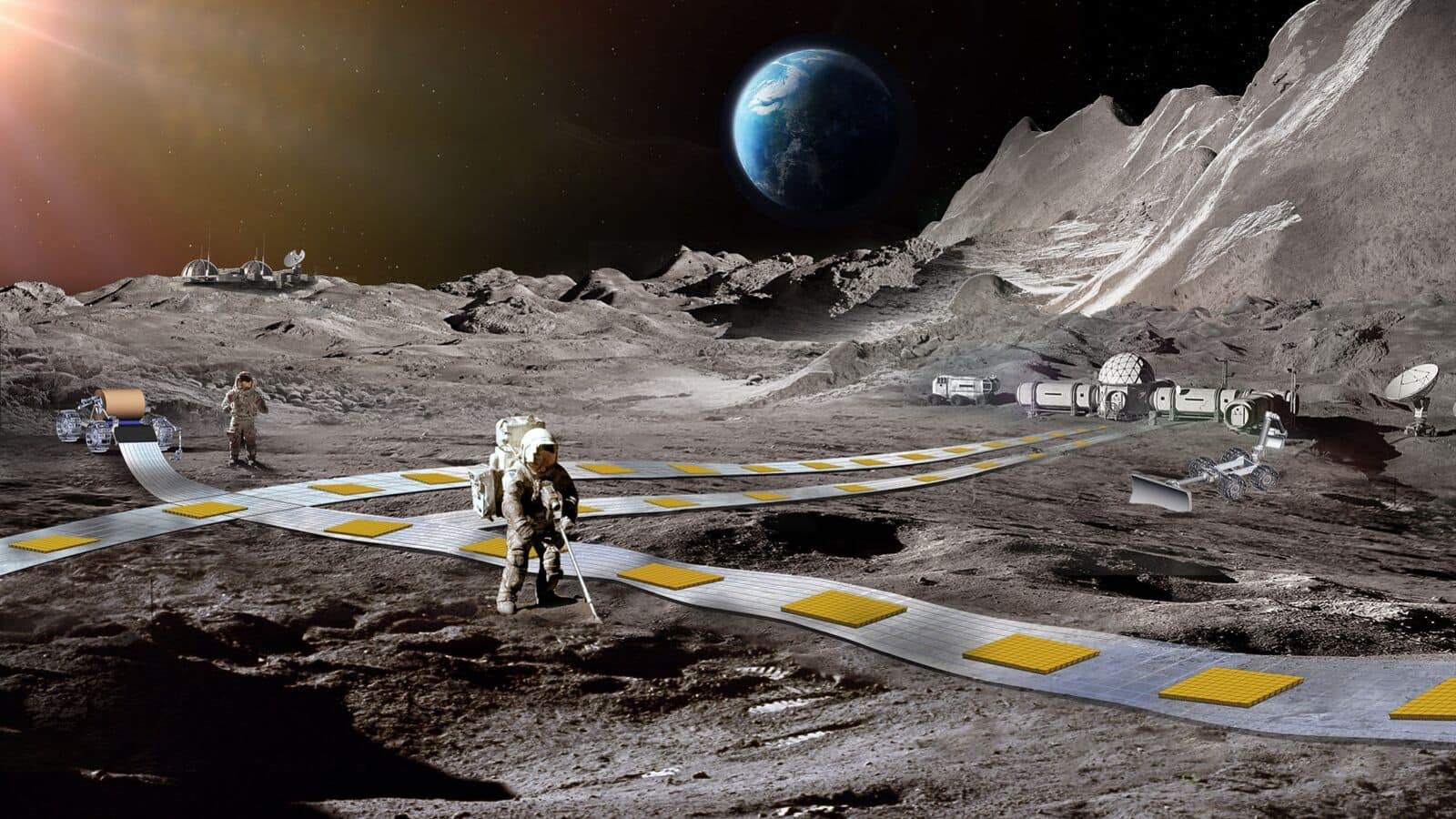
NASA announces plans for first railway system on Moon
What's the story
NASA has unveiled its plans to build the first-ever lunar railway system, aimed at providing reliable, efficient, and autonomous payload transport on the Moon. This announcement was made through NASA's official blog where it highlighted that this durable robotic transport system will play a pivotal role in the daily operations of a sustainable lunar base projected for the 2030s. The railway system is part of NASA's Moon to Mars initiative, and mission concepts like Robotic Lunar Surface Operations 2 (RLSO2).
Usage
Details of the lunar railway system
The lunar railway system, known as FLOAT — Flexible Levitation on a Track, is specifically designed to cater to the transportation needs on the Moon. It will be primarily used for transporting regolith mined for In-Situ Resource Utilization (ISRU) consumables, such as water (H2O), liquid oxygen (LOX), and liquid hydrogen (LH2). Additionally, it will facilitate moving payloads around the Moon base and to/from landing zones or other outposts.
System mechanics
FLOAT's unique operation and design
The FLOAT system will operate using unpowered magnetic robots that will levitate over a three-layer flexible film track. This track will pack a graphite layer for passive floating via diamagnetic levitation, and a flex-circuit layer for electromagnetic thrust generation to propel robots along the tracks. An optional solar panel layer made of thin-film for power generation when exposed to sunlight will also be present. The FLOAT robots, sans moving parts, will lower lunar dust abrasion/wear by levitating over the track.
Project progression
Phase 2 of the lunar railway project
In Phase 2 of this project, NASA plans to continue retiring risks related to manufacturing, deployment, and long-term usage of meter-scale robots/kilometer-scale tracks, that support human exploration activities on the Moon. This phase will involve designing, manufacturing, and testing a series of sub-scale robot and track prototypes, with a demo in a lunar-analog testbed. It will also include investigating the result of environmental effects on system performance and longevity.
Capabilities
FLOAT system's deployment and capacity
The FLOAT system will unroll directly onto the Moon's regolith, avoiding major on-site construction. It will be able to move up to hundreds of thousands of kilograms of regolith and payload, multiple kilometers per day. The concept for this innovative lunar railway system was proposed in 2021, under NASA's Innovative Advanced Concepts (NIAC) program.